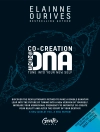This book follows the methodologies of complex adaptive systems research in their application to addressing the problems of terrorism, specifically terrorist networks, their structure and various methods of mapping and interdicting them as well as exploring the complex landscape of network-centric and irregular warfare. A variety of new models and approaches are presented here, including Dynamic Network Analysis, DIME/PMESII models, percolation models and emergent models of insurgency. In addition, the analysis is informed by practical experience, with analytical and policy guidance from authors who have served within the U.S. Department of Defense, the British Ministry of Defence as well as those who have served in a civilian capacity as advisors on terrorism and counter-terrorism.
Innehållsförteckning
Preface.- Part I: The Theoretical Background.- Modeling Terrorist Networks: The Second Decade.- Complex Systems Studies and Terrorism.- The Psychology of Terrorism.- A Framework for Agent-based Social Simulations of Social Identity Dynamics.- DIME/PMESII Models.- Net-Centric Logistics: Complex systems science aims at moving targets.- Part II: Applications and Case Studies.- A Fractal Concept of War.- Disrupting Terrorist Networks, A Dynamic Fitness Landscape Approach.- Comparison of approaches for adversary modeling decision support for counterterrorism.- The Landscape of Maritime Piracy and the Limits of Statistical Prediction.- Identities, Anonymity and Information Warfare.- Part II: Broader Horizons.- The Geography of Ethnic Violence.- Food Security and Political Instability: From Ethanol and Speculation to Riots and Revolutions.- South African Riots: Repercussion of the Global Food Crisis and US drought.- Conflict in Yemen: From Ethnic Fighting to Food Riots.- Complexity and the Limits of Revolution: What Will Happen to the Arab Spring?.












